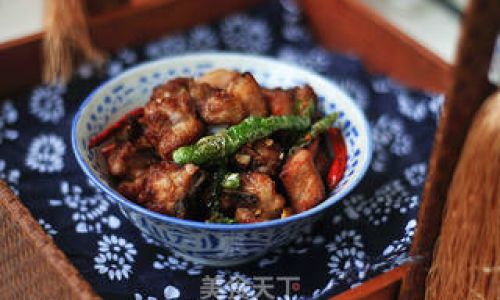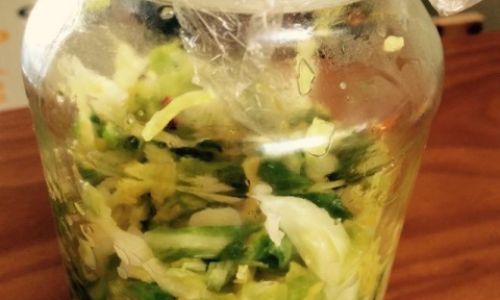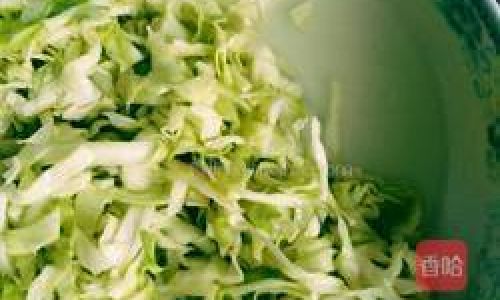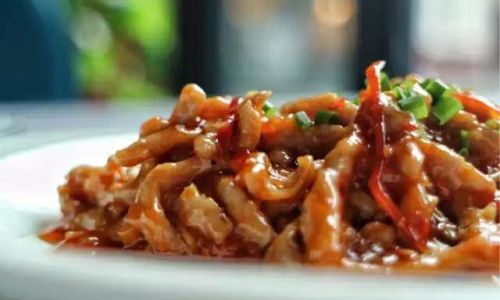Introduction
Stir-fried spare ribs, a beloved dish in Chinese cuisine, embodies the perfect balance of tender meat, crispy edges, and a symphony of flavors that dance on the palate. This dish, often referred to as chao pai gu in Mandarin, is a testament to the culinary ingenuity of combining high-heat cooking with aromatic spices and seasonings. While its origins trace back to China’s bustling street food scenes and home kitchens, its popularity has transcended borders, becoming a staple in restaurants and households worldwide. The beauty of stir-fried spare ribs lies not just in its taste but also in its versatility—it can be tailored to suit spice lovers, garlic enthusiasts, or those who prefer a milder, savory profile.
In this comprehensive guide, we will delve into the intricacies of preparing this dish, from selecting the finest ingredients to mastering the stir-fry technique that ensures every bite is succulent and bursting with flavor. Whether you are a novice cook or a seasoned chef, this article will equip you with the knowledge to recreate this classic dish with confidence and flair.
The Allure of Stir-Fried Spare Ribs
What sets stir-fried spare ribs apart from other pork preparations is its unique texture and depth of flavor. Unlike slow-cooked ribs that fall off the bone, stir-fried ribs retain a satisfying chewiness, with the edges caramelizing to a golden crisp under high heat. The marinade, a harmonious blend of soy sauce, rice wine, garlic, and spices, penetrates the meat, infusing it with umami-rich notes. When combined with the smokiness from wok hei (the breath of the wok) and the freshness of garnishes like scallions or cilantro, the result is a dish that is both comforting and exhilarating.

Ingredients: Building the Foundation of Flavor
To achieve culinary perfection, every ingredient must be carefully selected and measured. Here’s a breakdown of the essential components:
-
Spare Ribs (1.5 lbs / 680g):
- Opt for pork spare ribs with a balanced meat-to-fat ratio. Avoid overly lean cuts, as fat ensures juiciness during cooking.
- Ask your butcher to cut the ribs into 1.5-inch pieces for optimal cooking time and texture.
-
Marinade:
- Soy Sauce (3 tbsp): Use dark soy sauce for color and depth, or light soy sauce for a saltier kick.
- Shaoxing Rice Wine (2 tbsp): This aromatic cooking wine adds complexity. Substitute with dry sherry if unavailable.
- Cornstarch (1 tbsp): Creates a velvety coating that locks in moisture.
- Sugar (1 tsp): Balances the savory elements.
- White Pepper (½ tsp): Adds a subtle warmth without overwhelming.
- Baking Soda (¼ tsp, optional): Tenderizes the meat for a melt-in-the-mouth texture.
-
Aromatics and Seasonings:
- Garlic (6 cloves, minced): The backbone of the dish’s fragrance.
- Ginger (1 tbsp, grated): Provides a peppery zing.
- Dried Chili Flakes (1-2 tsp): Adjust to taste for heat.
- Oyster Sauce (1 tbsp): Enhances umami.
- Sesame Oil (1 tsp): Adds a nutty finish.
-
Stir-Fry Base:
- Neutral Oil (2 tbsp): Use peanut or vegetable oil for high-heat cooking.
- Onion (1 medium, sliced): Caramelizes for natural sweetness.
- Bell Peppers (1 cup, diced): Adds color and crunch.
-
Garnish:
- Scallions (¼ cup, chopped): For freshness.
- Sesame Seeds (1 tsp, toasted): Enhances visual appeal and texture.
Step-by-Step Guide to Culinary Excellence
Preparing the Spare Ribs
Begin by rinsing the ribs under cold water to remove bone fragments. Pat them dry with paper towels—excess moisture will prevent browning. If using baking soda, toss the ribs in a mixture of 1 tsp water and ¼ tsp baking soda before marinating. This step is optional but recommended for tender results.
Marinating for Maximum Flavor
In a large bowl, combine soy sauce, Shaoxing wine, cornstarch, sugar, white pepper, and half the garlic and ginger. Add the ribs, ensuring each piece is coated. Cover and refrigerate for at least 30 minutes (or up to 4 hours for deeper flavor). Marinating overnight intensifies the taste but is not mandatory.
Mastering the Wok Technique
Heat your wok or large skillet over high heat until it begins to smoke. Add the oil, swirling to coat the surface. The high heat is crucial for achieving wok hei—that coveted smoky aroma.
Searing the Ribs
Remove the ribs from the marinade (reserve the liquid) and arrange them in a single layer in the wok. Avoid overcrowding; cook in batches if necessary. Sear for 3-4 minutes per side until golden brown. The cornstarch will create a light crust, sealing in juices. Transfer the ribs to a plate and set aside.
Sautéing Aromatics and Vegetables
In the same wok, add the remaining garlic, ginger, and dried chili flakes. Stir-fry for 30 seconds until fragrant. Toss in the onions and bell peppers, stirring vigorously for 2-3 minutes until slightly softened.
Combining and Glazing
Return the ribs to the wok. Pour the reserved marinade over the mixture, along with oyster sauce and sesame oil. Stir-fry for an additional 3-4 minutes, ensuring the ribs are coated in the glossy sauce. The cornstarch will thicken the liquid, creating a sticky glaze.
Final Flourish
Remove from heat and fold in the scallions. Transfer to a serving platter and garnish with toasted sesame seeds. Serve immediately with steamed jasmine rice or egg noodles.

Tips for Success
- Temperature Control: Maintain high heat throughout cooking to prevent stewing. If the wok loses heat, remove it from the stove briefly to reignite the flame.
- Customizing Spice: For extra heat, add fresh bird’s eye chilies during the aromatics stage. Milder palates can omit chili flakes entirely.
- Meat Tenderness: If using tougher cuts, consider a 10-minute simmer in water before stir-frying.
- Glaze Consistency: Adjust cornstarch in the marinade for a thicker or thinner sauce.
Variations and Regional Twists
- Sichuan-Style: Incorporate doubanjiang (fermented broad bean paste) and Sichuan peppercorns for a numbing, spicy kick.
- Cantonese Sweet and Sour: Add pineapple chunks and a splash of vinegar during the glazing stage.
- Garlic Lover’s Edition: Double the garlic and add a handful of crispy fried garlic chips as a garnish.
Serving Suggestions
Stir-fried spare ribs pair exceptionally well with:
- Steamed Bao Buns: For a handheld snack.
- Stir-Fried Bok Choy: A crisp, green contrast.
- Pickled Vegetables: To cut through the richness.
Health and Nutrition Considerations
While this dish is undeniably indulgent, it can be lightened with minor tweaks:
- Use low-sodium soy sauce to reduce salt content.
- Substitute half the pork with mushrooms or tofu for a vegetarian twist.
- Increase vegetable ratios for added fiber.
The Cultural Tapestry of Stir-Fried Spare Ribs
Beyond the kitchen, this dish carries cultural significance. In Chinese households, it often graces festive tables during Lunar New Year celebrations, symbolizing prosperity and togetherness. Street vendors in Hong Kong and Taiwan have elevated it to an art form, tossing woks with rhythmic precision while crowds gather to savor the sizzling spectacle.
Conclusion
Stir-fried spare ribs are more than a meal—they are a celebration of tradition, technique, and taste. By mastering the marriage of marinade, heat, and seasoning, you unlock a dish that delights the senses and nourishes the soul. Whether you’re cooking for a crowd or craving a solo indulgence, this recipe invites you to embrace the joy of wok cooking. So, fire up your stove, gather your ingredients, and let the sizzle of stir-fried spare ribs transport you to a world where every bite tells a story.
Final Thoughts
Remember, the key to exceptional stir-fried spare ribs lies in patience and practice. Don’t be discouraged by initial attempts; even seasoned chefs refine their craft over years. Experiment with flavors, adjust seasonings to your liking, and most importantly, savor the process. After all, cooking is an adventure—and with this guide in hand, your journey through the realm of stir-fried spare ribs promises to be nothing short of delicious.





0 comments